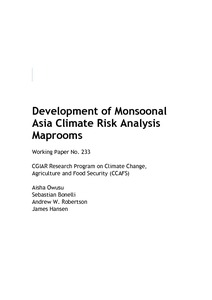Annual climate summary 2023
The report discusses the climate condition over Indian region during the year 2023. Notably, global temperatures soared to exceptionally high levels during this period (WMO.No.1347). The India Meteorological
The report discusses the climate condition over Indian region during the year 2023. Notably, global temperatures soared to exceptionally high levels during this period (WMO.No.1347). The India Meteorological
The year 2018 was the sixth warmest year on record in India since it commenced keeping nation-wide records of weather events in 1901, said India Meteorological Department (IMD)while noting that the country
The report discusses the operational monitoring and forecasting aspects of the 2018 southwest monsoon. Various observed global and regional climate patterns associated with the 2018 monsoon have been highlighted.
<p>The Sun’s activity cycle governs the radiation, particle and magnetic flux in the heliosphere creating hazardous space weather. Decadal-scale variations define space climate and force the Earth’s
This report is a synthesis of the science informing our understanding of climate in Australia and includes new information about Australia’s climate of the past, present and future. The science underpinning
The long-term warming trend has continued in 2018, with the average global temperature set to be the fourth highest on record. The 20 warmest years on record have been in the past 22 years, with the top
<p>India has become the first country in the world to develop this draft blueprint outlining action plan to bring down cooling requirement and refrigerant demands across sectors by 20 per cent to 25 per cent by 2037-38 while slashing cooling energy requirements by 25 per cent to 40 per cent within the same period. It was released by the Union Environment Minister Harsh Vardhan.</p>
Last year was the warmest ever recorded on Earth that didn’t feature an El Niño, a periodic climatic event that warms the Pacific Ocean, according to the annual state of the climate report by 500 climate
Most national policies to reduce greenhouse gas emissions in Europe target energy consumption and energy supply, while economic and regulatory instruments are the most common means of cutting emissions,

The Asian monsoon plays a major role in the variability of seasonal temperature and precipitation and the sub-seasonal statistics of these and other climate variables. Due to its considerable impact on
This paper, reviews the current availability of climate information in Southern Africa and assesses the requirements of a variety of end users in the region, using empirical findings from an innovative